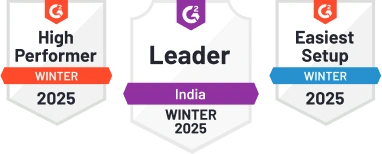Key Responsibility Areas (KRA) & Key Performance Indicators (KPI) for Mechanical Maintenance Engineer
1. Equipment Maintenance
KRA: Ensuring the proper maintenance of all mechanical equipment to minimize downtime and ensure operational efficiency.
Short Description: Efficiently maintain mechanical equipment.
- KPI 1: Percentage of scheduled maintenance completed on time
- KPI 2: Mean time between equipment failures
- KPI 3: Overall equipment effectiveness (OEE)
- KPI 4: Maintenance cost as a percentage of equipment value
2. Troubleshooting and Repairs
KRA: Identifying and resolving mechanical issues promptly to ensure continuous operation.
Short Description: Efficiently troubleshoot and repair mechanical faults.
- KPI 1: Mean time to repair (MTTR)
- KPI 2: Percentage of recurring issues resolved permanently
- KPI 3: Downtime due to unresolved mechanical issues
- KPI 4: Customer satisfaction with repair services
3. Preventive Maintenance Planning
KRA: Developing and implementing preventive maintenance schedules to prolong equipment lifespan and prevent breakdowns.
Short Description: Strategically plan preventive maintenance activities.
- KPI 1: Adherence to preventive maintenance schedule
- KPI 2: Reduction in unexpected breakdowns after preventive maintenance implementation
- KPI 3: Cost savings from preventive maintenance measures
- KPI 4: Equipment uptime post preventive maintenance
4. Safety Compliance
KRA: Ensuring all maintenance activities adhere to safety regulations and guidelines.
Short Description: Maintain a safe working environment during maintenance tasks.
- KPI 1: Number of safety incidents during maintenance operations
- KPI 2: Percentage of team trained in safety protocols
- KPI 3: Safety audit compliance score
- KPI 4: Adherence to personal protective equipment (PPE) guidelines
5. Inventory Management
KRA: Efficiently managing spare parts inventory to ensure availability for maintenance activities.
Short Description: Optimize spare parts management for maintenance needs.
- KPI 1: Inventory turnover rate for spare parts
- KPI 2: Percentage of critical spare parts availability
- KPI 3: Cost of carrying inventory as a percentage of maintenance budget
- KPI 4: Accuracy of inventory records
6. Team Management
KRA: Leading and motivating a team of maintenance technicians to achieve departmental goals.
Short Description: Efficiently manage maintenance team for optimal performance.
- KPI 1: Team productivity and efficiency metrics
- KPI 2: Employee satisfaction and retention rates
- KPI 3: Training hours per team member annually
- KPI 4: Achievement of team maintenance targets
7. Budget Management
KRA: Developing and managing maintenance budgets to optimize costs and resource allocation.
Short Description: Efficiently allocate and manage maintenance budgets.
- KPI 1: Maintenance cost variance from budget
- KPI 2: Cost savings achieved through budget optimization
- KPI 3: Percentage of budget spent on preventive maintenance vs. reactive maintenance
- KPI 4: Return on investment (ROI) for maintenance expenditures
8. Performance Reporting
KRA: Generating and presenting maintenance performance reports to management for decision-making.
Short Description: Provide insightful maintenance performance reports for management.
- KPI 1: Timeliness and accuracy of maintenance reports
- KPI 2: Implementation of action plans based on report findings
- KPI 3: Maintenance KPI trends over time
- KPI 4: Utilization of reports for continuous improvement initiatives
9. Regulatory Compliance
KRA: Ensuring compliance with all relevant regulations and standards in maintenance activities.
Short Description: Maintain adherence to regulatory requirements in maintenance processes.
- KPI 1: Audit findings related to maintenance compliance
- KPI 2: Number of regulatory violations in maintenance operations
- KPI 3: Training hours on regulatory updates for maintenance team
- KPI 4: Successful completion of compliance certifications
10. Continuous Improvement
KRA: Driving initiatives for continuous improvement in maintenance processes and practices.
Short Description: Foster a culture of continuous improvement in maintenance operations.
- KPI 1: Number of implemented improvement suggestions from maintenance team
- KPI 2: Reduction in maintenance costs through process enhancements
- KPI 3: Downtime reduction due to continuous improvement projects
- KPI 4: Employee engagement in improvement activities







